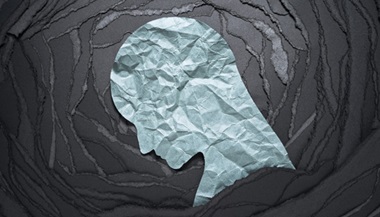Obsessive-Compulsive Disorder (OCD)
What is obsessive-compulsive disorder?
Obsessive-compulsive disorder (OCD) is a common anxiety disorder. It causes unreasonable thoughts, fears, or worries. A person with OCD tries to manage these thoughts through rituals.
Frequent disturbing thoughts or images are called obsessions. They are irrational and can cause great anxiety. Reasoning doesn’t help control the thoughts. Rituals or compulsions are actions that help stop or ease the obsessive thoughts.
What causes OCD?
Experts aren’t sure of the exact cause of OCD. Genetics, brain abnormalities, and the environment are thought to play a role. It often starts in the teens or early adulthood. But, it can also start in childhood. OCD affects men and women equally. It appears to run in families.
Other anxiety problems, depression, eating disorders, or substance use disorder may happen with OCD.
What are the symptoms of OCD?
Obsessions are unfounded thoughts, fears, or worries. They happen often and cause great anxiety. Reasoning does not help control the obsessions. Common obsessions are:
- A strong fixation with dirt or germs
- Repeated doubts (for example, about having turned off the stove)
- A need to have things in a very specific order
- Thoughts about violence or hurting someone
- Spending long periods of time touching things or counting
- Fixation with order or symmetry
- Persistent thoughts of awful sexual acts
- Troubled by thoughts that are against personal religious beliefs
While you may know that the thoughts are unreasonable and not due to real-life problems, it’s not enough to make the unwanted thoughts go away.
Compulsions are repetitive, ritualized acts. They are meant to reduce anxiety caused by the obsession(s). Examples are:
- Repeated hand-washing (often 100+ times a day)
- Checking and rechecking to make sure that a door is locked or that the oven is turned off for example
- Following rigid rules of order, such as, putting on clothes in the same order each day, or alphabetizing the spices, and getting upset if the order becomes disrupted
Compulsive acts can become excessive, disruptive, and time-consuming. They may interfere with daily life and relationships.
People may avoid situations in which they might have to face their obsessions. Some try alcohol or drugs to calm themselves.
How is OCD diagnosed?
OCD is diagnosed during a physical and psychiatric exam when obsessions and compulsions:
- Take up at least one hour each day
- Are distressing
- Interfere with daily life
Always see your healthcare provider for a diagnosis.
How is OCD treated?
Your healthcare provider will figure out the best treatment based on:
- How old you are
- Your overall health and medical history
- How sick you are
- How well you can handle specific medicines, procedures, or therapies
- How long the condition is expected to last
- Your opinion or preference
Treatment may include:
- Anti-anxiety or antidepressant medicines are often used.
- Cognitive behavioral therapy can also help.
Key points about OCD
- OCD is a common condition. It causes persistent disturbing thoughts and compulsive rituals that attempt to ease anxiety.
- The rituals become consuming and interrupt daily life.
- Stressful events may trigger the OCD episodes or make them worse.
- You may or may not have insight into the irrational thoughts or behaviors.
- Medicines and therapy can help reduce the time spent in the thought patterns or compulsive behaviors. Treatment is most successful when both are used.
Next steps
Tips to help you get the most from a visit to your healthcare provider:- Know the reason for your visit and what you want to happen.
- Before your visit, write down questions you want answered.
- Bring someone with you to help you ask questions and remember what your provider tells you.
- At the visit, write down the name of a new diagnosis, and any new medicines, treatments, or tests. Also write down any new instructions your provider gives you.
- Know why a new medicine or treatment is prescribed, and how it will help you. Also know what the side effects are.
- Ask if your condition can be treated in other ways.
- Know why a test or procedure is recommended and what the results could mean.
- Know what to expect if you do not take the medicine or have the test or procedure.
- If you have a follow-up appointment, write down the date, time, and purpose for that visit.
- Know how you can contact your provider if you have questions.




